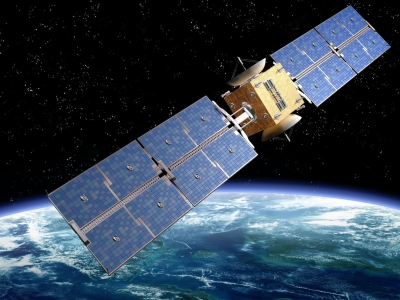ISRO moves GSAT-12 satellite to graveyard orbit

Chennai, April 22: The Indian space agency has successfully disposed of the communication satellite GSAT-12 in a post mission disposal (PMD) operation last month.
According to the Indian Space Research Organisation (ISRO), the post mission disposal operation of GSAT-12 was completed on March 23, 2023.
GSAT-12 is the twenty-third Geosynchronous Earth Orbital (GEO) satellite to undergo PMD before decommissioning, ISRO said.
The satellite carrying 12 extended C band transponders was launched on July 15, 2011. It was located at 83 degrees E longitude till March 2021. After the launch of its replacement satellite CMS-01 in 2020, it was later relocated to 47.96 degrees E longitude. The satellite served for more than a decade.
The GEO regime is one of the most populated and highly utilised regions. Internationally accepted space debris mitigation guidelines by the UN and IADC recommend disposing of an object away from the GEO region at its end-of-life.
The recommended practice is to re-orbit the object to a nearly circular “graveyard” orbit sufficiently above the GEO region so that the orbit would not decay back into the GEO-protected zone under the influence of perturbation forces, such as non-uniformity of Earth shape, Sun’s Moon’s gravity, solar radiation pressure, etc., within another 100 years, ISRO said.
Hence, the final disposal orbit must meet specific criteria on the minimum raise in perigee altitude depending on the object’s reflectivity, mass, shape, and size. The graveyard orbit also needs to be nearly circular (very low orbital eccentricity, less than or equal to 0.003).
According to ISRO, for GSAT-12, the required minimum raise in perigee altitude was estimated to be 261 km. As a result of meticulous operations management by the Master Control Facility (MCF), the available fuel of GSAT-12 was more than sufficient to meet this goal.
A series of seven manoeuvres were carried out to raise the orbit above the GEO altitude of 35,786 km. The first manoeuvre on March 16, 2023, was a shorter burn to circularize the orbit, followed by another six burns, typically of 150 seconds duration.
After completing the seventh burn on March 19, the satellite reached a super-synchronous circular orbit of nearly 400 km above the GEO altitude.
Space Debris Mitigation guidelines also recommend passivation/removing all energy sources, fluidic and electrical, to minimise the risk of any post-mission accidental break-up.
Four inclination changing manoeuvres of GSAT-12 were carried out during March 20-22 to spend the remaining propellant. On March 23, the final passivation manoeuvre was carried out to vent out the remaining fuel by firing the oppositely mounted thrusters, cancelling the net thrust without affecting the orbit, the Indian space agency said.
As part of electrical passivation, all rotating mechanisms such as the momentum wheels, reaction wheels and gyros were turned off, batteries were disconnected from the solar panels and discharged. Finally, the transmitters were switched off to avoid any potential RF interference. The passivation activities were completed on March 23, 2023.
All operations were conducted by MCF, Hassan, in coordination with U R Rao Satellite Centre, SATCOM Programme Office, and IS4OM (ISRO System for Safe and Sustainable Space Operations Management).






